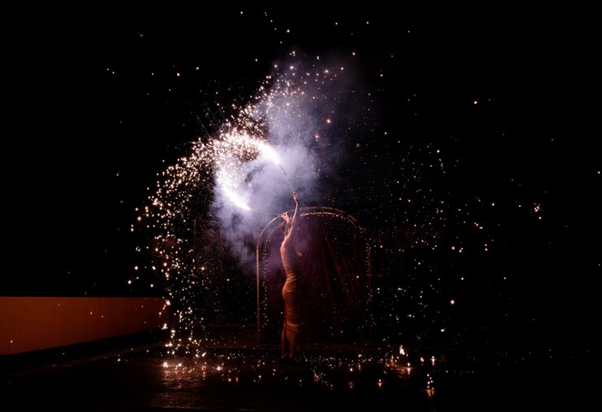When creating a genuinely captivating and unforgettable theatrical production, aerial and flying effects can elevate your show to the next level. Incorporating flying effects into a play, musical, or dance performance can capture your audience by creating a sense of surprise and awe.
Let’s explore some benefits of hiring a flying effects specialist for your production and different types of flying effects.
3 Different Types of Flying Effects
Wire Work
This procedure involves rigging actors with special harnesses connected to overhead motorized winches. Expert technicians meticulously regulate the players’ height, direction, and pace while operating the winches. The appearance of flight, levitation, or even acrobatic moves can be produced with wirework.
However, it takes a lot of practice to make the movements appear fluid and elegant, and making a motion that looks entirely natural can be challenging.
Aerial Rigging
To make acrobatic feats or dance routines, actors are suspended from wires or ropes. It takes great coordination between the actors, the rigging crew, and the lighting and sound technicians to achieve amazing effects with aerial rigging.
Another major concern is safety because any errors may cause fatalities or severe injuries. For this reason, most aerial rigging projects employ highly skilled individuals to manage the choreography and rigging.
LED Flying Effects
Advances in LED technology in recent years have made it possible to create some incredibly beautiful flying effects. In mid-air, LED drones can produce captivating patterns and shapes, and actors wearing LED suits can give the impression that they are hovering or gliding across the stage.
Additionally, LED technology enables the creation of complex digital landscapes and backdrops that may alter in real time as the actors move through them. To be visible against the brilliant LED backdrops, the performers may need to wear special costumes or harnesses, and these effects take a lot of preparation and coordination between the lighting and sound departments.
3 Reasons To Consider Employing Flying Effects
The options are unlimited when it comes to staging a school play. There are countless methods to make a show come to life, from remarkable sets to elaborate costumes. The addition of flying effects is one method to elevate your school performance. Using flying effects may have many more advantages than disadvantages, even though it may appear difficult.
Continue reading for three reasons to use flying effects in your students’ school play.
Captivate Your Audience
You may captivate your audience like never before with flying effects. Imagine the awe-inspiring gasps as your performers take to the skies, adding a whole new level of complexity to your play. Using flying effects can give your presentation a mystical touch that will captivate your audience.
Enhance the Dramatic Impact
Incorporating flight into key production moments can create suspense and excitement, keeping the audience on the edge of their seats. Whether it’s a dramatic rescue or a poignant revelation, flying effects can significantly enhance the emotional tension of your play.
Create Unforgettable Memories
Finally, using Flying Effects can help your kids make moments they will never forget. Your kids will remember the excitement of flying through the air and their achievement from completing a flight sequence long after the last curtain has fallen.
Moreover, you may produce a school play that your pupils will remember for years if you allow them to participate in something remarkable.

